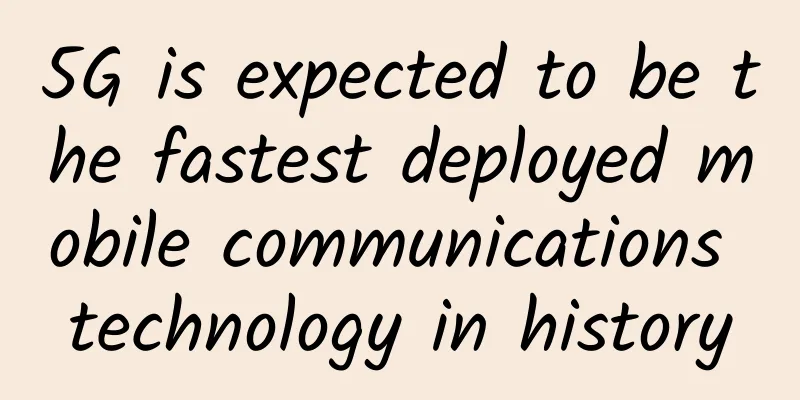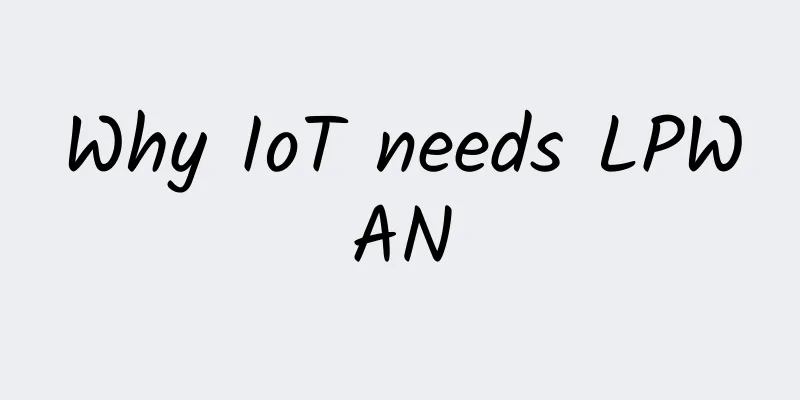The Secret History of IPv6

|
As we all know, IPv6 is a new technology that is currently being promoted to solve the problem of IPv4 address shortage. It is not new at all. It has been 27 years since the earliest IPv6 working group was established in 1992. In the development of Internet technology, IPv6 is even a little too old. IPv6 has also experienced many growing pains. In addition to the two brothers IPv4 and IPv6, there are many unknown things. Let us see and understand the secret history of IPv6.
The "6" in IPv6 refers to the sixth version of the TCP/IP protocol, and the "4" in IPv4 refers to the fourth version of the TCP/IP protocol. In addition to these two versions, there are of course other versions. The TCP/IP protocol actually started with IPv1, and now IPv10 has appeared. There is no connection between these different versions, nor is it simply the length of the IP address. The TCP/IP protocol comes from DARPA (Defense Advanced Research Projects Agency). In the summer of 1973, Kahn and Cerf of DARPA developed a basic improved network protocol, which was the prototype of TCP/IP. Soon in 1974, DARPA and BBN (a high-tech company located in Cambridge, Massachusetts, USA), Stanford and the University of London signed an agreement to develop a running version that can be supported on different hardware platforms. At that time, a total of four versions were developed, and TCPV1 and TCPV2 were initially available. In 1975, tests were conducted between Stanford and the University of London. In November 1977, tests were conducted between the United States, the United Kingdom and Norway. In this process, the TCP/IP protocol was constantly patched. In the spring of 1978, TCP/IP was divided into improved versions of TCPV3 and IPv3. The next version was the stable TCP/IPv4 version. IPv4 has since stepped onto the historical stage, and the world has ushered in the Internet era. IPv4 has therefore dominated the Internet for nearly fifty years. Before IPv4, there were three versions, IPv1~IPv3. The contents of these versions are now difficult to find, and there is little information to introduce the contents of these versions. IPv3 and IPv4 are the closest. IPv4 made some deletions based on the definition of IPv3 and was finally finalized. IPv4 was officially deployed on January 1, 1983. In 1984, the US Department of Defense used TCP/IP as the standard for all computer networks. Later, IPv4 soon became the standard network protocol for the Internet. The huge success of IPv4 has overshadowed the edge of other IPvX. In fact, before IPv4 became popular, DARPA itself did not expect such a huge impact. When it was first designed, it was just to solve some communication problems within the military. In addition, the computer and fiber optic communication technologies at the time were not mature, so IPv4 did not have a good time in the first twenty years, and IPv4 did not attract much attention and use. However, the research had to continue, and IPv5 soon emerged. IPv5 is an experimental resource reservation protocol, known as the Internet Stream Protocol (Stream Protocol). Its purpose is to provide quality of service (QoS), support multimedia (voice, video and real-time data traffic), and transmit in real time on the Internet. IPv5 consists of two protocols, one is the ST protocol for data transmission, and the other is the Stream Control Message Protocol SCMP (Stream Control Message Protocol), also known as ST2. The purpose of IPv5 design is not to replace IPv4, but to hope that multimedia applications will use these two types of protocols at the same time, using IPv4 to transmit traditional data packets, and IPv5 to transmit data packets carrying real-time data. RFC 1700 is the prototype of the IPv5 standard definition. Although it has never been truly implemented, IPv5 was eventually integrated into the IPv4 protocol. In IPv4, there is a resource reservation standard called the transport layer protocol RSVP (Resource Reservation Protocol), which can implement resource reservation requests initiated by the receiving end on IPv4. RSVP is described in detail in RFC 2205. In 1994, when the IETF working group began to study the "Internet Next Generation Protocol", they needed a new version number, but IPv5 had been assigned to the ST protocol, so they chose IPv6. IPv6 is an alternative version of IPv4 and has nothing to do with IPv5. As we all know, IPv6 is designed mainly to solve the problem of IPv4 address shortage, so the IPv6 protocol definition has some shadows of IPv4 protocol. IPv6 is not a complete re-invention of IPv4, most of the protocol processing is inherited, and improvements are made to the defects encountered in the actual use of IPv4. Before IPv6 appeared, IPv7 had already appeared, but IPv6 was defined earlier and grabbed a version number first. IPv7 was proposed by Robert Ullmann in 1992. In 1993, it was described in more detail in RFC1475, titled "TP/IX: The Next Generation Internet". TP/IX was designed with 64-bit addresses. Later, TP/IX evolved into another protocol defined in RFC 1707, CATNIP (Common Architecture for the Internet). According to the estimates at the time, the number of 64-bit IP addresses in IPv7 was not small, and it was enough at the time. After all, the longer the IP address is designed, the shorter the data packet payload will be, and the lower the transmission efficiency will be. However, the development speed of IPv4 network has exceeded everyone's expectations, especially the economic rise of third world countries, which have a huge demand for the Internet, but few IPv4 addresses. IPv4 addresses are facing a shortage problem. Some people also predict when IPv4 addresses will be divided up, and if it continues to develop at this speed, the allocation of 64-bit IP addresses of IPv7 may soon encounter bottlenecks. So everyone has turned their attention to IPv6. IPv6 has a 128-bit IP address length, which is enough to assign an IP address to every grain of sand in the world. IP is massive, and even now it is unimaginable when IPv6 will be used up, so IPv6 has received great attention as the next generation protocol. In the past two years, IPv4 addresses have been divided, and the Internet of Things has an urgent need for development. IPv6 has been pushed onto the historical stage, and the whole network has launched a wave of IPv6 transformation of IPv4. The IP protocol has not stopped its pace of development, and IPv8 has also appeared. IPv8 inherits and broadens the performance of IPv4, avoiding the shortcomings of IPv6 that are too different from IPv4 and system incompatibility. IPv8 mainly implements the security of the IP layer, which is achieved through security options similar to IPv6. In fact, there is also a shadow of IPv8 in IPv6, which is why IPv8 did not replace IPv4 in the end. IPv8 can only solve the security problems of IPv4. IPv8 cannot meet the needs of the new generation of networks, and gradually became a purely theoretical technical standard. On April Fool's Day in 1994, British engineer Julian Onions published "A Historical View of Using IPv9", which became the RFC1606 draft, and IPv9 was proposed. IPv9 was sci-fi at the time, describing the emergence of a new Internet protocol several years later and its application in the future. Later, my country redefined IPv9, which improved the possible protocol defects of IPv6. Moreover, IPv4 and IPv6 both use hexadecimal technology, while IPv9 uses decimal technology. The number of addresses that can be allocated is 7 times that of IPv6. Of course, IPv9 is still a theory and has not been widely recognized internationally. Later, until 2017, IPv10 was also released. IPv10 uses a very simple and effective method to solve the problem of mutual communication between hosts using the IPv6 protocol and hosts using the IPv4 protocol. IPv10 is used for communication between the two without protocol conversion. From IPv1 to IPv10, the history of the development of Internet network protocols is witnessed. Many of the stories of these protocols are little known and have become long-hidden secrets. When they are mentioned again, they have a different flavor. It turns out that there are not only IPv4 and IPv6 network protocols, but now there are 10. |
<<: Intermediate explanation of IP/TCP protocol, handshake process and data packet format
>>: Ruijie Cloud Desktop has emerged as a new force. Why do users prefer it?
Recommend
From 5G to 6G: The race between innovation and disruption
McKinsey's 2022 Technology Trends Outlook sho...
In the 5G era, virtual operators “disappear”
[[269893]] "In the 4G era, the three major t...
VMISS Hong Kong VPS 30% off annual payment from 75 yuan, 20% off for all Korea/Japan/Hong Kong CN2/Los Angeles CN2 GIA/9929/CMIN2 optional
VMISS is offering special discounts during the Ch...
Huawei's new generation of 400GE data center switches enable new infrastructure and stimulate new momentum
[[334907]] Hu Kewen, President of Huawei's Da...
Don't let MAC address drift become your nightmare: practical protection and detection methods
Overview of MAC Address Flapping MAC address drif...
Let’s talk about gRPC that you don’t know today
Hello everyone, I am Zhibeijun. It is the last da...
Let's talk about short links
Introduction I am working on a promotion system r...
Do you know how HTTP uses TCP connection? Today I will tell you
[[281789]] 1. How does HTTP use TCP connections? ...
Speedtest releases Starlink network speed test report
Ookla, the parent company of the well-known speed...
Xentain: $1.25/month-1GB/15GB SSD/1Gbps unlimited traffic/Fremont data center
New merchant, mainly with the discount code, the ...
5G and eSIM drive enterprise IoT growth
New research shows that businesses around the wor...
Regarding the 6G satellite, I am "confused"
[[351012]] On November 6, a satellite named "...
Detailed explanation of five Docker container network modes
Docker networking sets up how containers communic...
The data is not real-time enough: try long connection?
background In certain scenarios, we often need to...
How to understand 5G air interface (NR)?
The telecommunications industry certainly hopes t...









